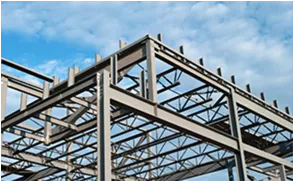- Afrikaans
- Albanian
- Amharic
- Arabic
- Armenian
- Azerbaijani
- Basque
- Belarusian
- Bengali
- Bosnian
- Bulgarian
- Catalan
- Cebuano
- Corsican
- Croatian
- Czech
- Danish
- Dutch
- English
- Esperanto
- Estonian
- Finnish
- French
- Frisian
- Galician
- Georgian
- German
- Greek
- Gujarati
- Haitian Creole
- hausa
- hawaiian
- Hebrew
- Hindi
- Miao
- Hungarian
- Icelandic
- igbo
- Indonesian
- irish
- Italian
- Japanese
- Javanese
- Kannada
- kazakh
- Khmer
- Rwandese
- Korean
- Kurdish
- Kyrgyz
- Lao
- Latin
- Latvian
- Lithuanian
- Luxembourgish
- Macedonian
- Malgashi
- Malay
- Malayalam
- Maltese
- Maori
- Marathi
- Mongolian
- Myanmar
- Nepali
- Norwegian
- Norwegian
- Occitan
- Pashto
- Persian
- Polish
- Portuguese
- Punjabi
- Romanian
- Russian
- Samoan
- Scottish Gaelic
- Serbian
- Sesotho
- Shona
- Sindhi
- Sinhala
- Slovak
- Slovenian
- Somali
- Spanish
- Sundanese
- Swahili
- Swedish
- Tagalog
- Tajik
- Tamil
- Tatar
- Telugu
- Thai
- Turkish
- Turkmen
- Ukrainian
- Urdu
- Uighur
- Uzbek
- Vietnamese
- Welsh
- Bantu
- Yiddish
- Yoruba
- Zulu
Nov . 12, 2024 12:27 Back to list
Architecturally Exposed Structural Steel A Harmonious Fusion of Aesthetics and Engineering
In the realm of modern architecture, the integration of structural elements into the design narrative has taken on a significant role, particularly with the use of architecturally exposed structural steel (AESS)
. This innovative approach not only emphasizes the strength and functionality of steel as a building material but also celebrates its aesthetic potential, offering a unique blend of form and function.AESS is defined as structural steel that is intentionally exposed within the context of a building’s design, rather than being concealed behind finishes or cladding. This deliberate exposure allows the raw beauty of steel to be showcased, transforming utilitarian elements into focal points of architectural interest. The use of AESS can be traced back to the progressive movements of the late 19th and early 20th centuries, with architects and engineers seeking to express the honesty of materials and celebrate industrial aesthetics.
One of the most compelling features of AESS is its inherent versatility. Steel can be fabricated in a myriad of shapes and sizes, allowing architects to explore bold and innovative designs. Whether it’s the sweeping curves of a contemporary museum, the angular lines of an office complex, or the intricate latticework of a bridge, AESS can adapt to a wide range of architectural styles. This adaptability also extends to finishes; steel can be left with a raw, unfinished appearance, or it can be polished, painted, or coated to generate various visual effects that complement the overall design scheme.
The decision to use AESS often stems from a desire for transparency in both the construction process and the final aesthetic. Exposed steel elements can convey a sense of honesty and authenticity, which many architects and clients find appealing. By revealing the structural framework, designers invite observers to appreciate the craftsmanship involved in the construction process. This transparency can foster a deeper connection between the occupants and the building, as they recognize the strength and resilience that the exposed steel provides.
architecturally exposed structural steel

From a practical standpoint, the use of AESS also offers several advantages. Steel is renowned for its strength-to-weight ratio, allowing for the creation of larger open spaces without the need for excessive support columns or walls. This capability is particularly advantageous in urban environments where maximizing usable floor area is critical. Moreover, steel is highly durable and can withstand harsh weather conditions, making it a suitable choice for a variety of climates. Its non-combustible nature adds an additional layer of safety, which is a significant consideration in modern architectural design.
Incorporating AESS into a design does come with its set of challenges. The structural integrity of exposed elements must be meticulously considered during the design phase to ensure that they can bear loads while maintaining their visual appeal. Moreover, the aesthetic finish of AESS must be diligently maintained to prevent corrosion and degradation over time. Architects and engineers must collaborate closely from the early stages of a project to address these concerns and develop a cohesive design that balances structural needs with aesthetic goals.
One notable example of AESS in action is the Skidmore, Owings & Merrill-designed One World Trade Center in New York City. The building’s exposed steel frame not only serves as a striking architectural feature but also symbolizes resilience and rebirth in the face of adversity. Similarly, the Centre Pompidou in Paris, designed by Richard Rogers and Renzo Piano, showcases vibrant, exposed structural elements that have become iconic symbols of modern architecture.
As the architectural landscape continues to evolve, the use of architecturally exposed structural steel will likely remain a compelling option for architects seeking to create structures that are not only functional but also visually striking. By embracing AESS, designers can craft spaces that celebrate the beauty of engineering while fostering a deeper connection with the built environment.
In conclusion, architecturally exposed structural steel embodies a thoughtful synthesis of aesthetics and engineering. Its ability to transform standard structural components into celebrated artistic expressions opens doors for innovative design possibilities. As architects increasingly recognize the value of honesty in materiality and the importance of aesthetics in structural design, AESS is poised to play an essential role in shaping the future of architecture.
-
Steel Frame Modular Construction for Housing
NewsAug.07,2025
-
Steel Construction Factory Processes
NewsAug.07,2025
-
Portal Frame Shed for Sale: Delivery Options
NewsAug.07,2025
-
Metal Workshops for Sale: Insulation Solutions
NewsAug.07,2025
-
Metal Steel Building Manufacturers: Post-Construction Services
NewsAug.07,2025
-
Metal Garage Shed Kits: Size Options
NewsAug.07,2025
Products categories
Our Latest News
We have a professional design team and an excellent production and construction team.












